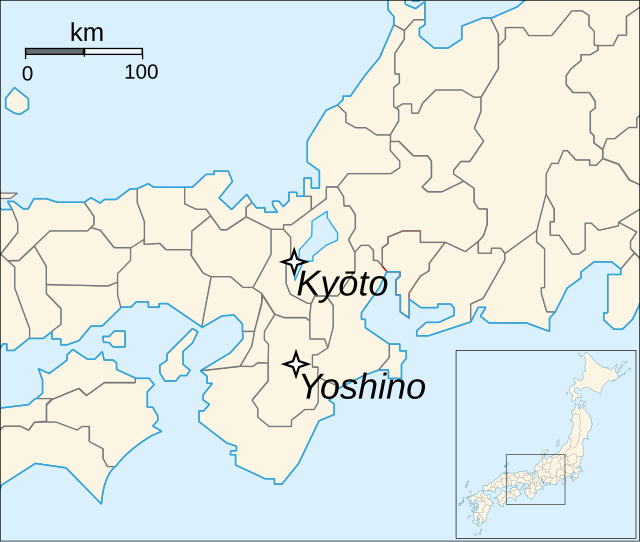Top Qs
Timeline
Chat
Perspective
Kōkoku
Period of Japanese history (1340–1346) From Wikipedia, the free encyclopedia
Remove ads
Kōkoku (興国) was a Japanese era of the Southern Court during the Era of Northern and Southern Courts after Engen and before Shōhei, lasting from April 1340 to December 1346.[1] The emperor in Kyoto was Emperor Kōmyō (光明天皇, Kōmyō-tennō).[2] Go-Kōgon's Southern Court rival in Yoshino during this time-frame was Emperor Go-Murakami (後村上天皇, Go-Murakami-tennō).
Nanboku-chō overview

During the Meiji period, an Imperial decree dated March 3, 1911, established that the legitimate reigning monarchs of this period were the direct descendants of Emperor Go-Daigo through Emperor Go-Murakami, whose Southern Court (南朝, nanchō) had been established in exile in Yoshino, near Nara.[3]
Until the end of the Edo period, the militarily superior pretender-Emperors supported by the Ashikaga shogunate had been mistakenly incorporated in Imperial chronologies despite the undisputed fact that the Imperial Regalia were not in their possession.[3]
This illegitimate Northern Court (北朝, hokuchō) had been established in Kyoto by Ashikaga Takauji.[3]
Remove ads
Change of era
Events of the Kōkoku Era
- 1342 (Kōtoku 3): Ichijō Tsunemichi loses his position as kampaku; and he is replaced by Kujō Michinori.[4]
- 1342 (Kōtoku 3): Minamoto no Nagamichi (源長通) is removed from his position as daijō daijin.[4]
- 1342 (Kōtoku 3): Kujō Michinori is replaced by Takatsukasa Morohira, who was formerly udaijin.[4]
- 1342 (Kōtoku 3): Fujiwara no Kiyoko dies. She was the daughter of Usesugi Yorishige and the mother of Ashikaga Takauji.[4]
- 1343 (Kōtoku 4): Nijō Yoshimoto, the author of Masukagami, was promoted from the court position of nadaijin to udaijin; and in due course, the udaijin was promoted to sadaijin. The dainagon was promoted to nadaijin.[4]
- 1344 (Kōtoku 4): Shōgun Takauji offered prayers at Iwashimizu Hachiman-gū.[4]
Notes
References
External links
Wikiwand - on
Seamless Wikipedia browsing. On steroids.
Remove ads